An Easy Guide to Growing Ranunculus Asiaticus ‘Persian Buttercup’
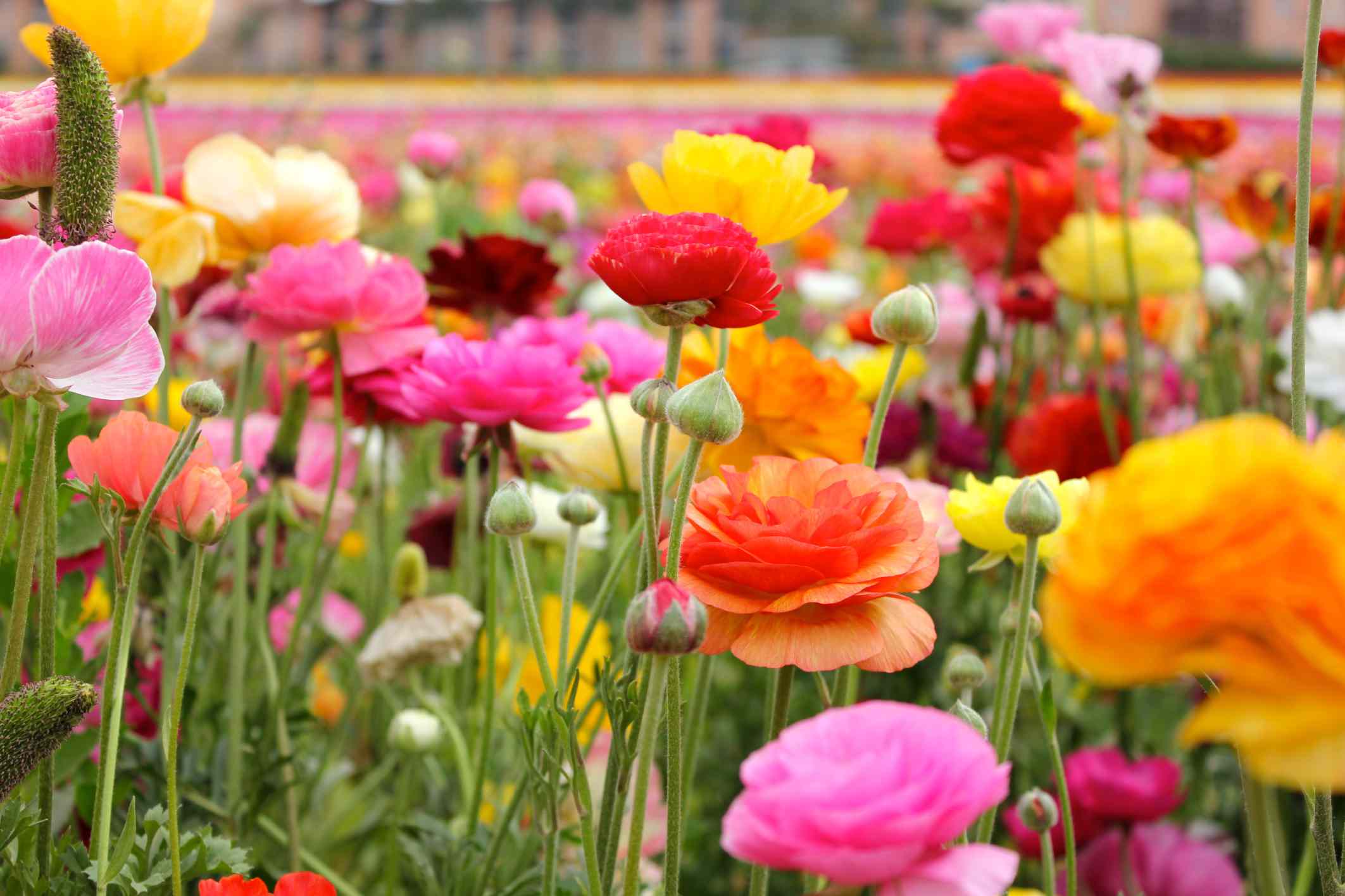
Table of Contents
Ranunculus asiatica is also known as the Persian buttercup due to its Mediterranean native. The plant has its root in central Asia, mainly on the southern shores of the Caspian Sea. But they can be grown anywhere by keeping a few factors in mind. These colorful flowers can be grown from seed as well as from their flowering bulbs.
Persian buttercups like cool weather but cannot tolerate extreme frost. Frost burn is a real concern with these plants, as they turn black and abort their blooms. Although these flowers are not fragrant, their bright shades of pink, cream, yellow, and red pay off in bloom dullness and color.
These plants have a mounding growth, i.e., growth occurs both vertically and horizontally, giving them a somewhat rounded look. They rarely exceed 2 feet in height and width. Another amazing quality of these colorful flowers is that they last longer if they are provided with adequate drainage, and they do not prefer a water-logged substratum.
Here are a few tips that include growing, caring, and propagating the Persian buttercups for abundant growth.
How to Grow Ranunculus from Seeds?
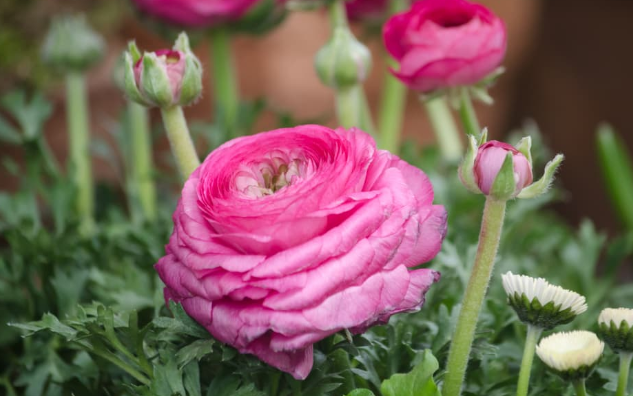
Commonly known as buttercups, these plants are popular for their eye-catching pastel colors and long vase life. These vibrant bloomers are great for potting or planting in your garden. Purchase the ranunculus seeds of the color you wish to bloom from online or offline stores. You can sow a single-colored buttercup or even a mix of all shades for decorative purposes.
Begin by preparing the substratum or seed starter that consists of cocopeat, compost, and a small amount of fungicide powder to avoid seed rotting problems in a container or tray. Make sure the pot has drainage holes so that the soil is not water-logged and does not affect the seeds.
After moistening the soil, sprinkle several ranunculus seeds on top. The seeds are easily identifiable as they are small, white colored with a brown center or brown colored with a brown center. As the buttercups have a low germination rate, sprinkle a large number of seeds generously on the seed mix and sow them when the temperatures are cool.
How to Grow Ranunculus Seeds Indoors?
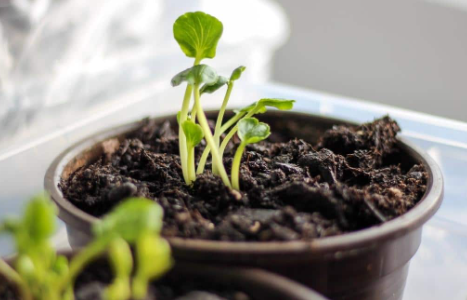
There is a general rule when it comes to sowing seeds. Cover them with soil or seed starter that equals three times the thickness of the seeds, and as this protects them from pests, blowing away from the wind, etc. The gentle tapping and misting with water after sowing will help to get good seed-to-soil contact and keep the seeds moistened.
While their initial stage of germination, keep the container where there is ample sunlight and take care that the soil is moist so the seeds remain hydrated. The buttercups will start germinating in about two weeks, and the small foliage growth is a clear indication. While this entire process, only adequate watering should be done, or else overwatering will result in disease and kill the seedlings.
In about a month, seedlings will start to grow big, and at this stage, true leaves are clearly visible. During this process, seedlings require a lot of light. If they do not get ample light, they will turn weak.
Allow the seedlings to grow and mature into larger leaves before transplanting them in larger containers or outdoors. This will help them grow a firm root system, which will cause less damage in transfer and help recover the shock. The buttercups can be transplanted outdoors when the danger of frost has passed. Two months from sowing, they’ll be prepared for the transfer into a larger vessel. In warmer regions, it is advised to plant the buttercups outdoors in the autumn, and in colder areas, plant outdoors in the early spring.
How to Take Care of Ranunculus?
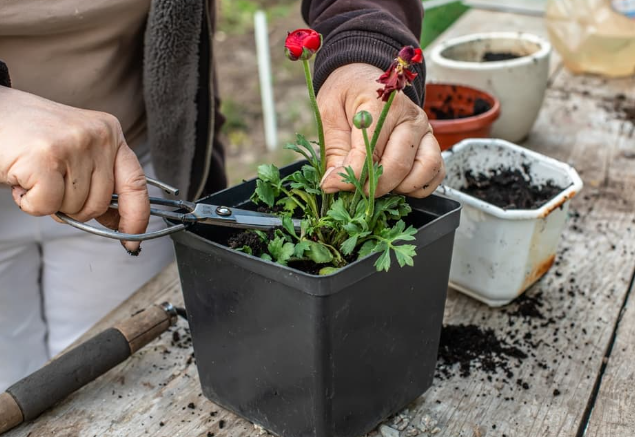
With the help of a hand trowel, carefully remove the seedlings by digging 1 to 2 inches deep and pulling them out without damaging other plants so that they can be transplanted into larger containers. The pots or containers need to have drainage holes to avoid water-logged soil and prefer to plant in a pot with at least 12-inch depth and diameter.
Ranunculus plants flourish in well-drained sandy soil, so prepare a soil mixture that has a large amount of garden soil, followed by compost and river sand or perlite. After preparing the substratum, make a 2-inch deep hole to plant at least 3 to 4 seedlings in a pot at a distance of 6 to 7 inches apart.
Important Factors to Consider While Growing Ranunculus
Make sure you carefully feed the roots right down into the hole, then gently firm the seedling inwards. You can bury some stem for additional support and if the seedlings are weak. Take care of keeping the crown above the soil surface to avoid crown rot. Or else the plants will die due to a lack of nutrients in roots and stems.
For at least 3 to 4 days, keep the new plants in the shade and keep watering the plants on a regular basis to keep them moistened and overcome the shock. Afterward, you can keep the containers in bright spots as ranunculus need sunlight on a daily basis. At least 5 to 7 hours of sun exposure is essential for healthy growth.
At this stage of growth, spray water-soluble fertilizers that have NPK composition on the leaves. The leaves should be fed with this mixture every 20 days for healthy growth and larger blooms. The best course of action while watering ranunculus is to water them deeply but irregularly. When you feel the top soil has dried, only then water them to avoid rotting.
Over time, the bud opens and blossoms into a mature flower, and the sepals look like little green leaves at the base of the flower. Fertilize the blooms regularly, as they need extra nutrients to support their blooming.
Persian buttercups will bloom prolifically in spring or summer, sending up a large number of flowers in a short period of time. As with many flowering plants, it is advisable to remove the spent flowerheads once they wither with the help of pruners. Once your ranunculus flowers are blooming, you’ll want to deadhead or remove the dead flowers. This will maximize growth.
This process not only makes the plant look tidier but also encourages other flowers to form. Moreover, this reduces the amount of energy the plant spends on seed formation, which helps preserve the plant’s strength.
Collect the seeds after the pods dry. Each pod consists of at least 100 seeds. You can preserve them in a cool, dry, and airy place for at least one year. But it is better to sow the seeds as soon as possible.
How to Grow Ranunculus from Tubers?
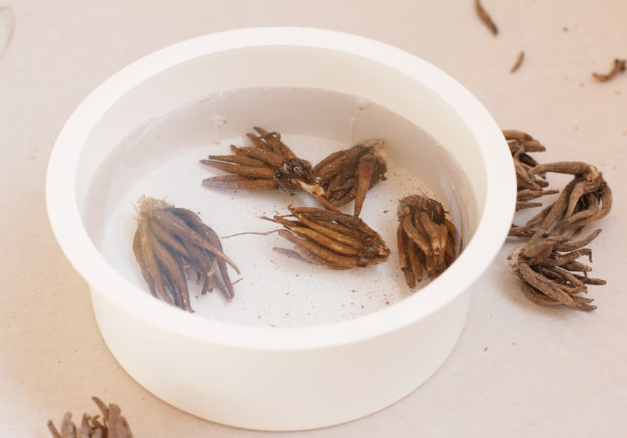
Persian buttercup can be grown hassle-free from seeds as well as by propagating their tubers. The most typical technique of propagation of these plants is by splitting the tubers and removing offsets in the autumn, so they can multiply.
Those who live in northern climates should store their tubers over the winter in vermiculite or peat. Heavy clay soil prevents the plant from growing. Hence use cocopeat, sandy garden soil, and organic compost in equal proportions. When planting, water the area well.
Replanting in the spring requires soaking the tubers for about one hour in warm water till they swell. The tubers should then be planted 2 inches deep with the claws facing down in an 8 to 10-inch diameter pot. To prevent root rot, make sure to plant in soil that has excellent drainage, so select a container with holes in the bottom.
You can plant 1 to 2 tubers per container, keeping them at a distance of 4 to 5 inches from each other for better growth. Ranunculus plants prefer a sunny location, but if you are in an extremely hot climate, they will grow in the shade. Furthermore, these plants cannot tolerate heavy frost, so it is recommended to store their tubers or bulbs inside for the winter.
During the growing period, add water whenever the soil starts to dry up. Sprouting will be visible in about a week or 10 days. After the true leaves arrive and the plant starts to bear larger foliage, add slow-releasing fertilizers high in potassium and phosphorous every 15 to 20 days. These fertilizer granules should be placed in a small hole away from the main stem, and the plants should be watered immediately.
Ranunculus blooms in about two and half months after planting tubers, and the flowering continues for another one and a half months.
How to Take Care of Ranunculus After They Flower?
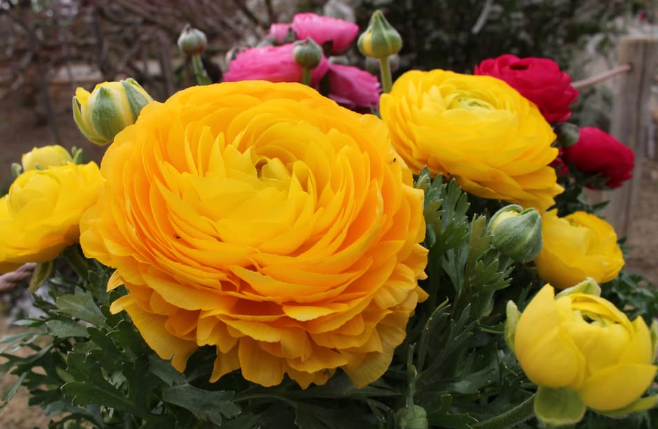
Ranunculus are beautiful flowers that have rose-like blossoms and a distinct feature, layer upon layer of tissue-thin petals. These plants require minimum maintenance.
During the blooming season, regularly remove the dead flowerheads so that the remaining blooms look decorative and there is more space for new ones. There are hardly any pest or animal attacks on this plant, as it is poisonous in nature and has a bitter taste.
To keep the potted plants for the coming year, allow leaves to remain on the plant after flowering. They’ll eventually turn yellow and dry up as tubers become dormant. Store the pot in a cool but frost-free spot for a few months until new growth appears, then resume watering.
Conclusion
Ranunculus asiatica can be grown by two different methods; seeds and tubers. These low-maintenance plants can bloom in any climate and create an aesthetic and eye-catching look that can be placed on windowsills, gardens, or hanging baskets.
Their pungent taste and lack of fragrance will make it a lot easier to grow and maintain them in the summer and spring without spending a penny on pesticides and covering them up.
We have listed out the best way to grow the Persian buttercup and how to develop this frilly beauty in your landscape. Follow the above tips and guides to begin your gardening project indoors with the buttercups and get different color shades with bountiful growth.

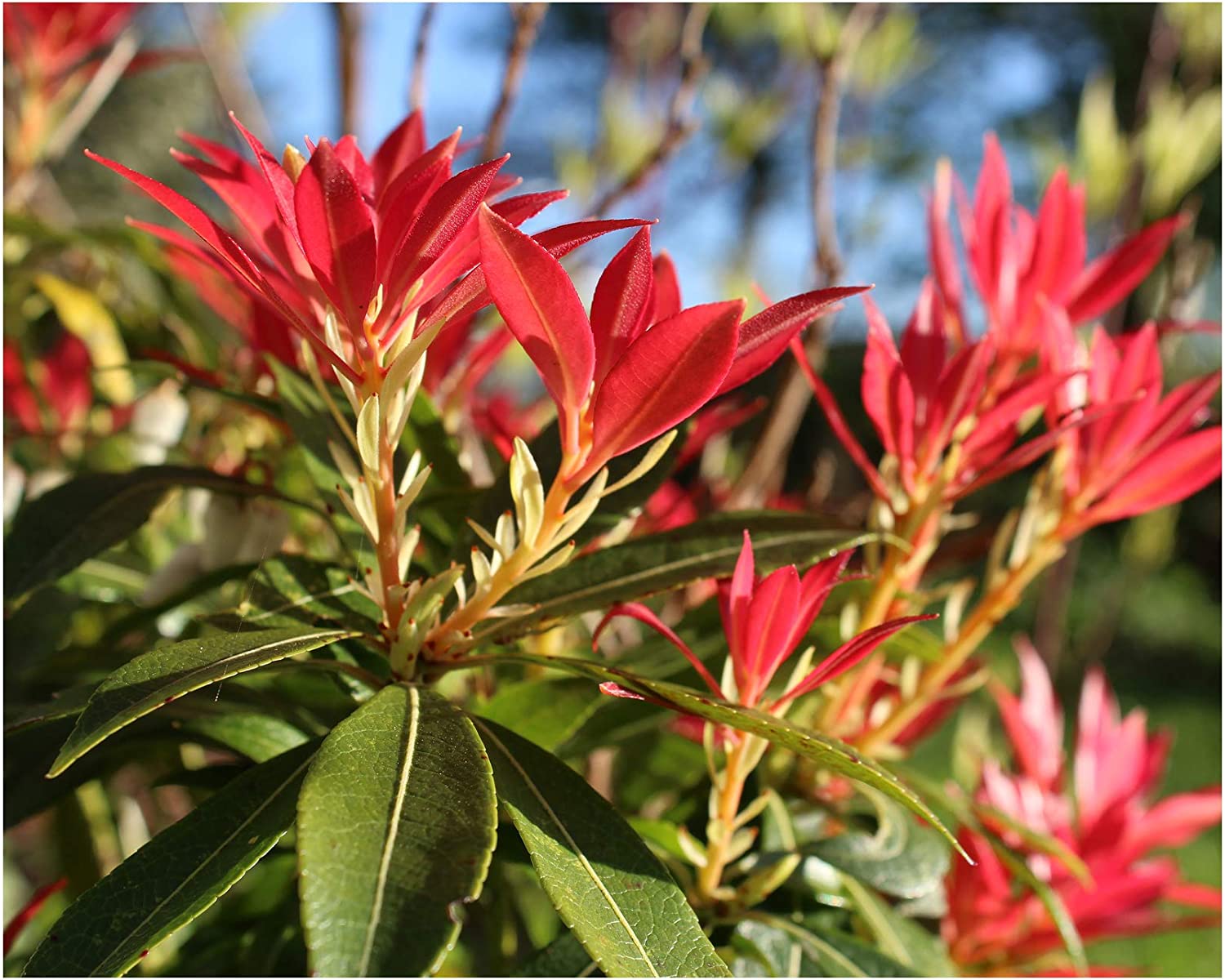

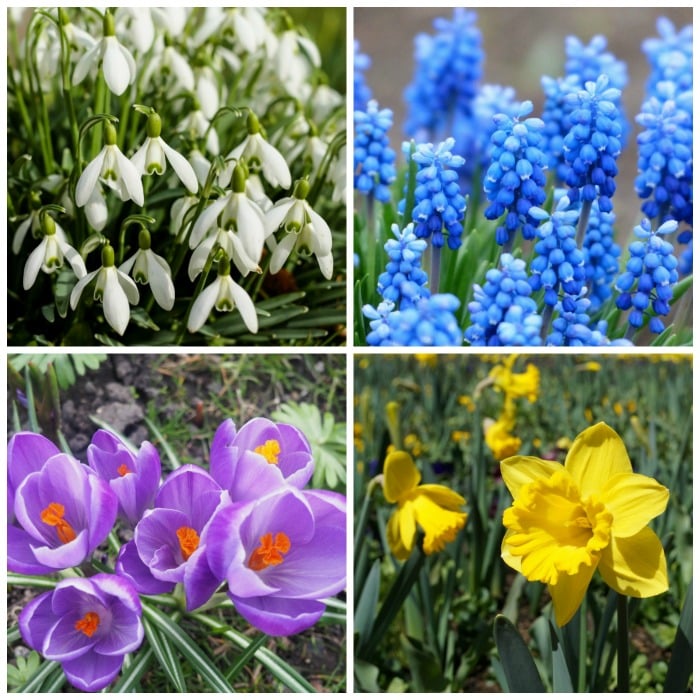
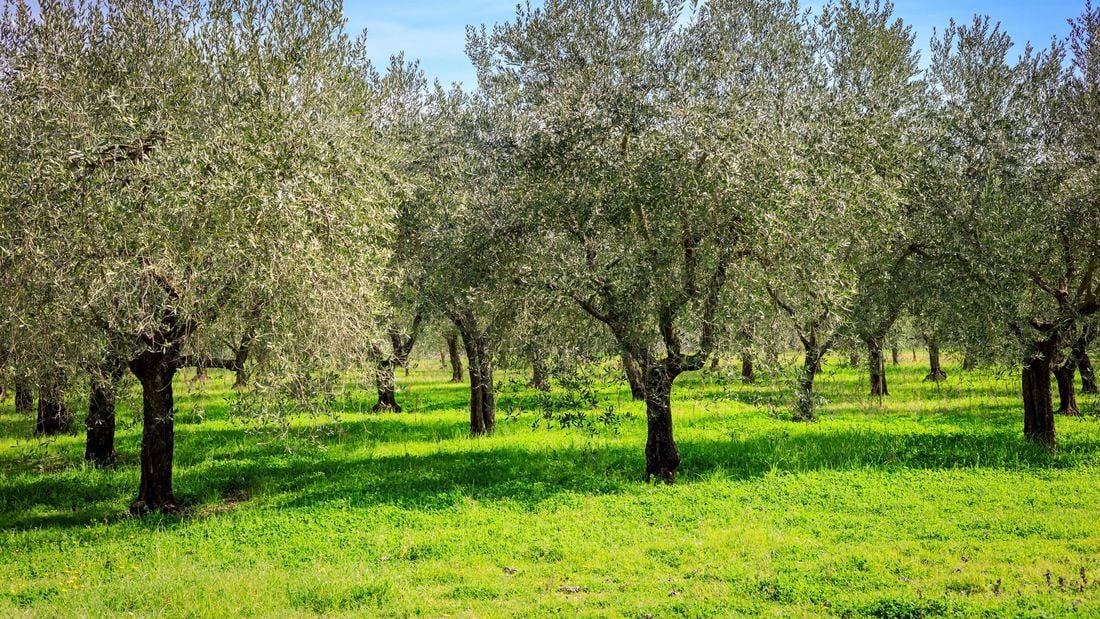
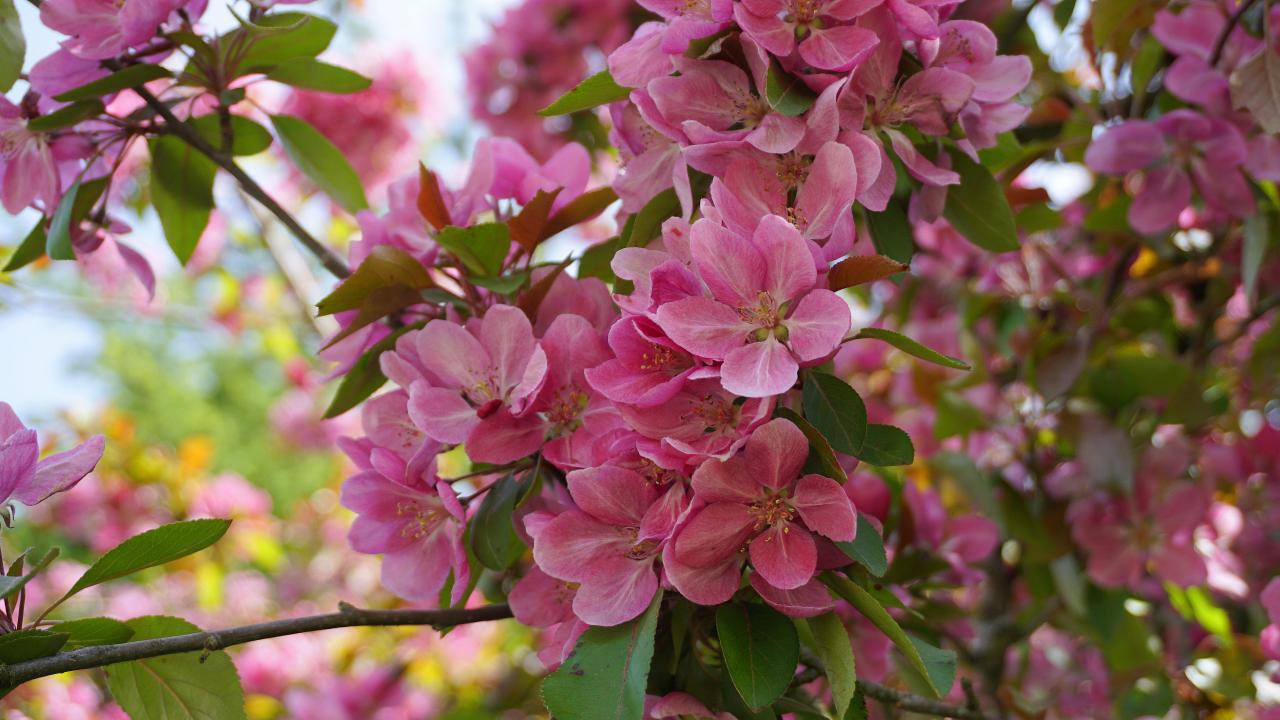
![How to Grow and Care Bougainvillea Plant [UK]](https://staging.thearches.co.uk/wp-content/uploads/Bougainvillea-Plant-Care-Growing-Tips-1.jpg)